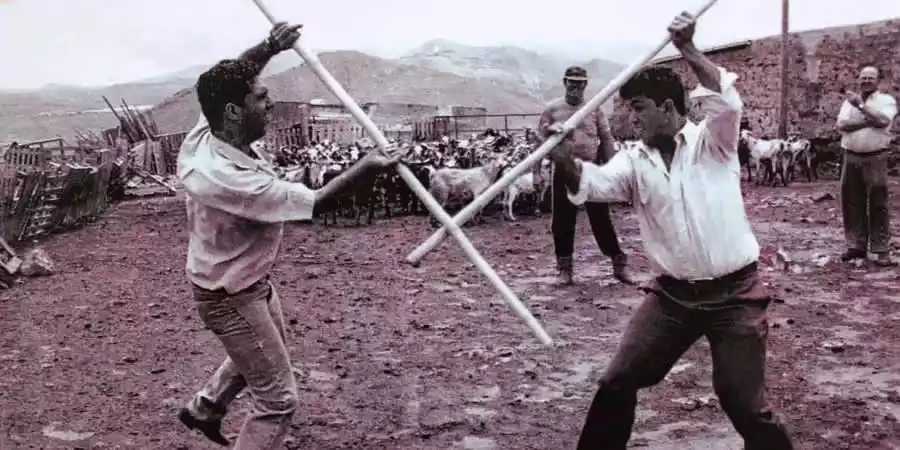
This traditional ludic practice is a confrontation between two players using sticks that they handle with their hands. It can be defined as a form of stick fencing involving different sizes and grips (short stick, stick, cane, and club), based on the execution of controlled attack techniques, which are countered by the other player.
Stick fighting was a common practice among the Canarian aborigines, with its origin likely rooted in warfare or military training.
Oral tradition has played a key role in preserving and passing down information and stories, allowing us to better understand more recent uses of the stick as a means of defense, for handling animals, or as a tool in shepherding tasks.
Today, three types of stick games are practiced in the Canary Islands, distinguished by the size of the stick used, with each category encompassing various styles.
Lanzarote is the only island that has its own style. It is used in the medium stick modality (no higher than the chin, nor lower than the waist). It has been in serious danger of disappearing, although its situation is currently solid thanks to the determined intervention of the island's Cabildo Insular. His oldest known Master, José Mª Feo Barreto from the town of Haría. At this time his Master is D. Cristín Feo.
The game is characterized by a grip by the thickest part of the stick, when gripped distally. Predominantly Crouching Short Game (with techniques started from below). The Full Catch is common (opposite stick blocking defenses), although some of the most characteristic techniques are Deflections (Dodge and displacement of the opposite stick in the direction of its initial trajectory).
It is the only Canarian Game of Attack - Atajada - Contra (you attack only once, always waiting for an immediate response, to defend and attack again).